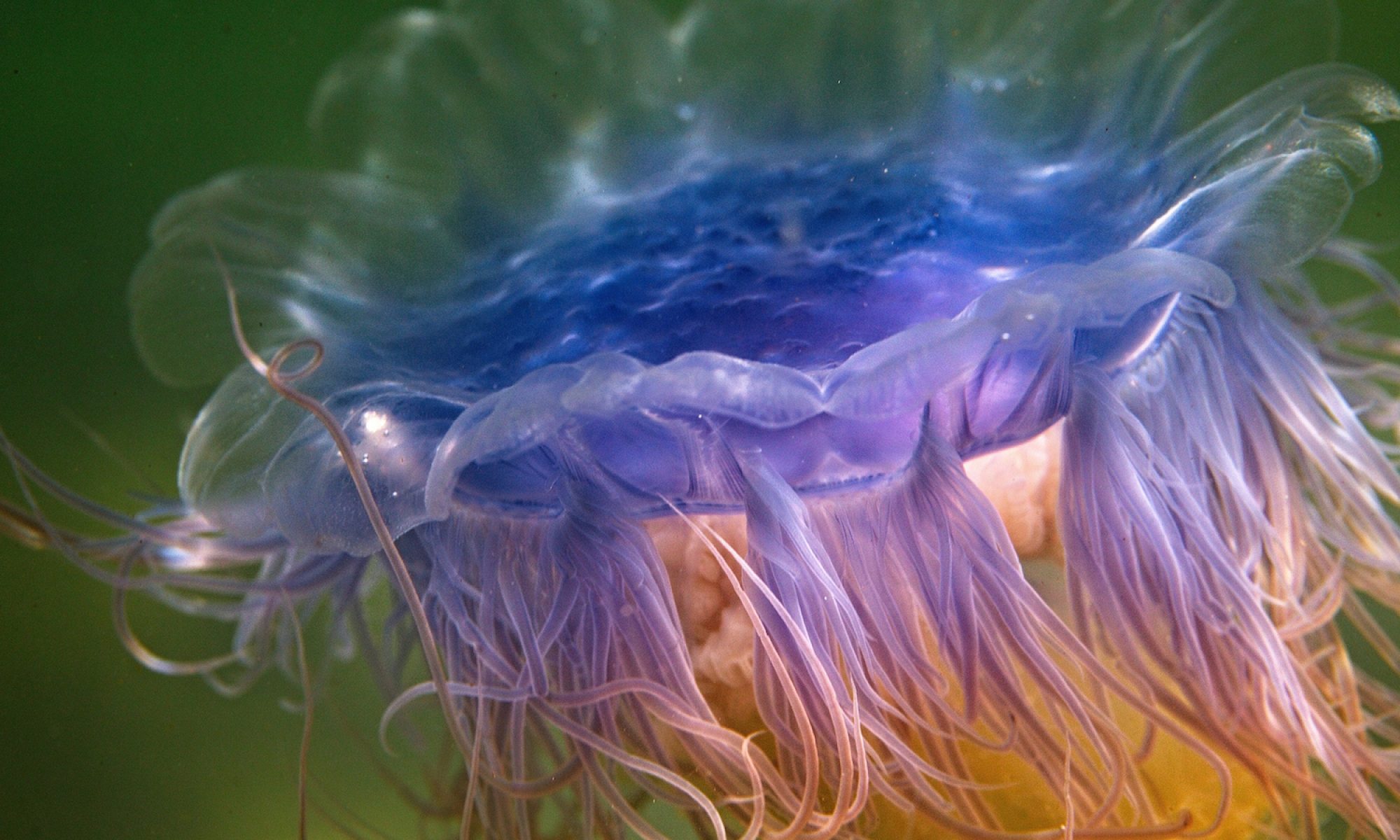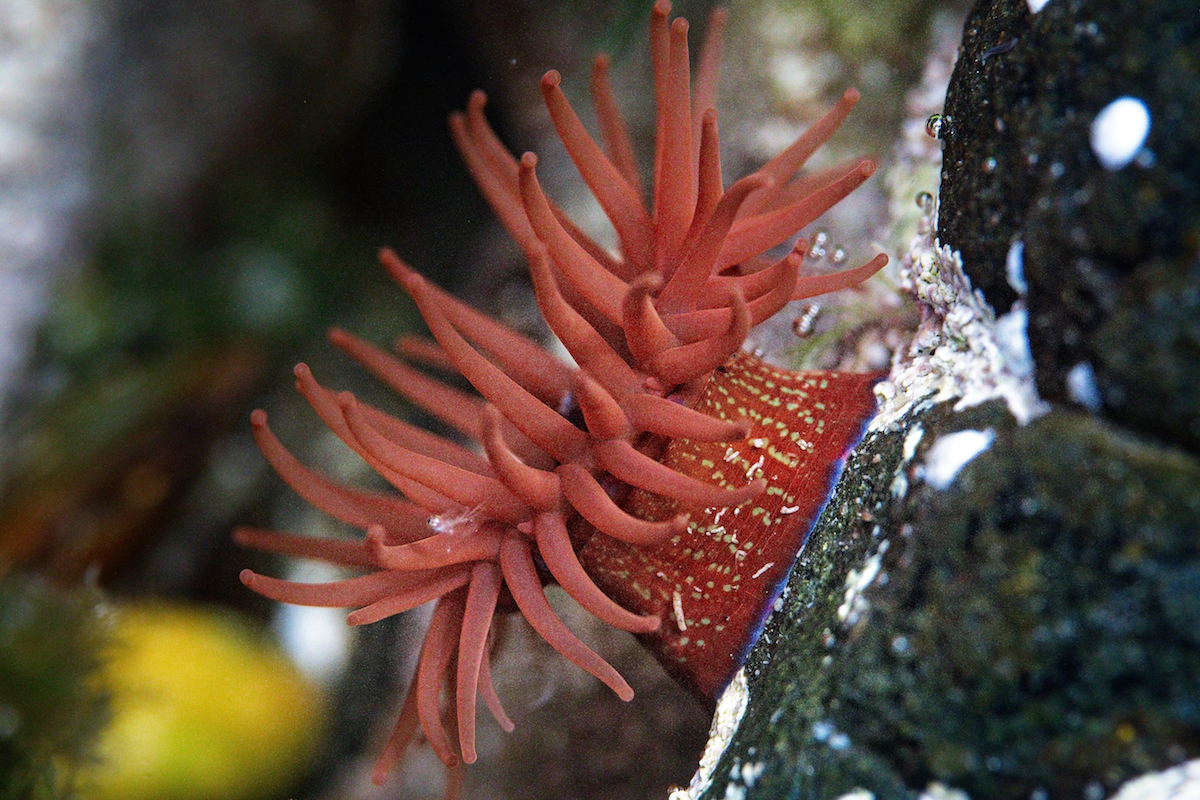Page still under construction
Our Dive Locations on the Isle of Skye
During the course of the Below the Skye Line project we have utilised dive location from all areas of the Isle of Skye. There has also been a mixture of freshwater and seawater sites utilised as dive locations. Most of the camera work is undertaken in reasonable shallow water with Gill using a snorkel. This allows a good deal of natural light which is enhanced with strobe lighting where required.
One of the key considerations with all our dive locations is having permission to acces the dive site which often entials crossing private land. Just has we have to have an awarness of not disturbing the underwater habitat we must remain that much of hte land is worked by crofters. Their animals are part of the livelihood and consideration for wild or farm animals on the land is just as important.
Locations - Alphabetical
Aird Bernisdale
Aird Bernisdale is near the head of Loch Snizort and is one of a number of dive locations used on Loch Snizort for our underwater photography. The site has proved versatile with starfish, wrasee, anemonies and crabs all featuring in images that have been created.
Ardmore
Ardmore Bay is a wonderful curved bay at the 'roads end' on the Waternish penninsular near to the car park at Trumpan. Amongst the rocky shoreline there is a variety of seaweeds and also geological features which include the Ardmore arches. Above water it is also close to Trumpan Church which was the location of the gruesome massacre of the local community in 1578 during the conflict between the two Skye clans; the MacLeods and the MacDonalds.
Banachdich
Being one of the easier Munros on the Isle of Skye many walkers will know Sgurr na Banachdich (965m). Below the peak sits a wonderful coire and from this runs clear mountain water down into the river Brittle in the glen below. Only a couple of images (so far) from Allt a' Choire na Banachdich which unsurprisingly features a crystal clear rock pool and bubbles as water cascades down via the mountain stream.
Borreraig
Carbost
The character of Talisker Whisky is exuberant, wild and free, with one foot on the land, one in the sea. So says their website. It is a good metaphor for the Below the Skye Line project.
Carbost is probably most famous as home of Talisker Whisky. However it has also proved a very productive dive location. In July 2020 the colour of the young mussels produced some wonderful images.
Mussels, shrimp, goby, nudibranch, blood henry starfish, starfish and anemone have all been photographed at this location.
Carnach
Coral Beach
Coral Beach is one of Skye's most famous destinations for visiting tourists and is listed as one of the top ten walks on the Island by IsleofSkye.com. Its popularity with tourists makes access difficult at times. For visitors the beach is the destination. Beneath the water though, just offshore, is some great seaweed beds. Their fine strands catch the light as they move wit hthe current and the tides.
Though it has not been a regulalrly used dive loaction it produced a few differnet images when visited in 2019.
Duibhaig
Dunvegan
Fanks
Fanks has proved one of the most successful dive locations on the Isle of Skye. A wide variety of jellyfish have been photographed here along with hydroza. There is also an abundance of anemone, sea snals and crabs. These along with many different type of seaweed give plenty of scope for creative underwater photography.
In 2019 there were a number of excellent images of hte Lions Mane jellyfish but in 2020 it was the Blue jellyfish that was seen more often.
Fiskavaig
Fiskavaig is from the Norse language and translates to Fish Bay. We seem to be collecting 'fishy bays' with Tarskavaig on Sleat (visited in 2019) also from Norse and translating to Cod Bay.
Fiskavaig is a small crofting community found on the Minginish penninsular (translates as Main Headland) to the North of Carbost, an underwater dive site which has proved very successful in 2020. In 1921 evidence of Pict settlement was discovered when a symbol stone was found on the beach. This is on display in the Museum of Scotland.
Gesto
Glen Brittle
Glen Brittle is most famous for being the location of the Fairy Pools, one of the Isle of Skye's most popular tourist attractions. The pools place a huge strain on the fragile environment of the Glen which is home to manu interesting animals and plants. The Glen runs North to South and it is the river Brittle and her tributaries which have been used as dive locations. The waters in the river run straight from the Cuillin, to the East.
In times of heavy rain the river and its tributaries are in spate as they tumble down the mountains and the Glen. Far too dififuclt to dive in safely with camera equipment. But the water is cristal clear and there are a number of pools where wild salmon still return as part of their remarkable life cycle.
Greadaidh
Greshornish
Hinnisdale
Kildonan
Knott
Leinish Bay
Rubh an Uillt Dharaich
Sconser
Shiante
Loch Shiante (often spelt Shianta or Sheanta) is a freshwater loch on the North of the ISle of Skye which is fed by what was in Celtic times one of Skye's most important healing wells. It is another one of our dive locations that also appears as a recommended walk on Skye. Being only a 1km walk this is one of the shorter and easier walks on the island.
The loch is famously cold, being fed by spring water. However the cold is compensated by its fabulously clear waters, wonderful plants and stunning underwater light effects.
Snizort
Stein
Tarskavaig
The link between the Gaels and the Vikings is not only to be found in the name Tarskavaig. Tarsk is loaned from Norse and the name translates to 'Cod Bay' . At near by Rubha an Dùnain there are the remains of a Viking canal. The community was built upon crofting and fishing, with kelping being one of the key industries.
Currently only one dive has been made at this location, with limited success. But no doubt as the project continues there will be opportunties to explore further the delightful waters around this small historic settlement in the South corner of the Isle of Skye.
Tokavaig
Tokavaig is a dive location than many visitors to the Isle of Skye will be aware of. On the Sleat penninsular many visit to see the remains of Dun Scaith castle. The sweep of the bay is enchanting with a backdrop of the Cuillin to the West.
Tokavaig translates to the swelling or bay of the whale. So far there has only been one dive at this location but we were rewarded with an image of a sea hare.
Tormore
Tormore, on the Sleat penninsular translates as 'the big hill'. Having been sold to the foresty commission in 1960 much of hte hillside was, until recently, covered in pine trees. These are now being cleared by the Sleat Community Trust which once more opens up the views to the craggy coast line.
Behind Tormore house they is a shelter inlet which needs a little care due to strong tides and sea surges. This movement of water agitates the kelp and other seaweeds that are to found there.
Ullinish
Waterloo
Waternish
A final thought! We love the environment both above and below the water. But it is fragile. Lets us all give nature some room to breath. Try not to disturb wild life or natural habitats and take away with you everything you arrived with.
Page still under construction





You must log in to post a comment.